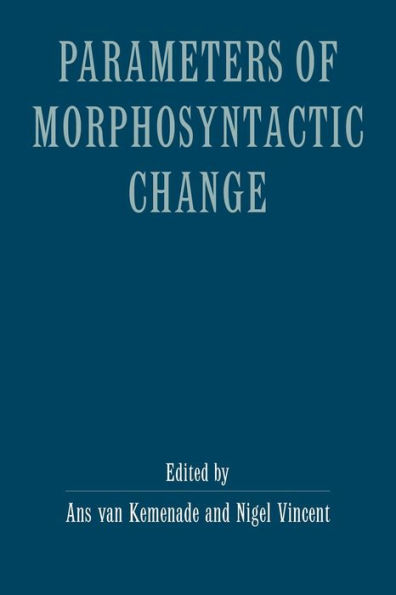5
1
9780521586436



Parameters of Morphosyntactic Change available in Hardcover, Paperback

Parameters of Morphosyntactic Change
- ISBN-10:
- 0521586437
- ISBN-13:
- 9780521586436
- Pub. Date:
- 05/01/1997
- Publisher:
- Cambridge University Press
- ISBN-10:
- 0521586437
- ISBN-13:
- 9780521586436
- Pub. Date:
- 05/01/1997
- Publisher:
- Cambridge University Press

Parameters of Morphosyntactic Change
$62.99
62.99
In Stock

Product Details
| ISBN-13: | 9780521586436 |
|---|---|
| Publisher: | Cambridge University Press |
| Publication date: | 05/01/1997 |
| Pages: | 558 |
| Product dimensions: | 5.98(w) x 9.02(h) x 1.14(d) |
From the B&N Reads Blog
